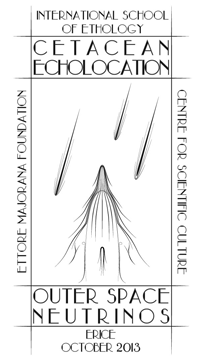Speaker
Mr
Jamie Macaulay
(SMRU)
Description
Using passive acoustics to track the movements of animals underwater is well established in cetacean research. However as animals get smaller, their vocalisations tend to get higher in frequency and less dispersed hydrophone arrays are required in order to determine a location. As arrays get smaller, errors in the estimated position of hydrophones and sound speed become much greater in proportion to the received time delays. In reverberant environments high vocalisation rates can result in problems matching detections on different hydrophone elements further complicating matters.
For harbour porpoises, which vocalise at 130kHz with a highly directional bio-sonar and can produce upwards of 600 indistinguishable clicks per second, these challenges are particular acute. However the harbour porpoise is a protected species and one of Europe’s most abundant cetaceans, hence it is vital tools are created to better understand their use of certain habitats, especially with rapid expansion of the marine renewable energy industry.
We have trialled a practical free floating hydrophone system which can be deployed in challenging habitats, such as tidal areas, to track the 3D movements of harbour porpoises underwater.
Markov chain Monte Carlo (MCMC) techniques were employed to localise positions of porpoises and effectively propagate errors, such as sound speed fluctuations, individual hydrophone element positions and cross correlation of narrow band signals, into final position estimates. Echoes and detection matching problems were addressed by localising all possible combinations of detections over all hydrophone elements and determining the combination which best fits the MCMC localisation algorithm. This ‘brute force’ approach has proved highly effective in trials using a simulated porpoise clicker deployed at different depths and ranges and has the ability to localise any number of vocalising animals simultaneously.
We will show how MCMC localisation compares against more traditional techniques, such as direct hyperbolic methods and present data on calibration experiments to the check accuracy of this system in the field. We will conclude with some examples of wild porpoise and dolphin tracks from survey data collected over the last two years.
Primary author
Mr
Jamie Macaulay
(SMRU)
Co-authors
Dr
Douglas Gillespie
(University of St Andrews)
Jonathan GORDON
(Marine Ecological Research Ltd)
Simon NORTHRIDGE
(School of Biology, University of St. Andrews)

